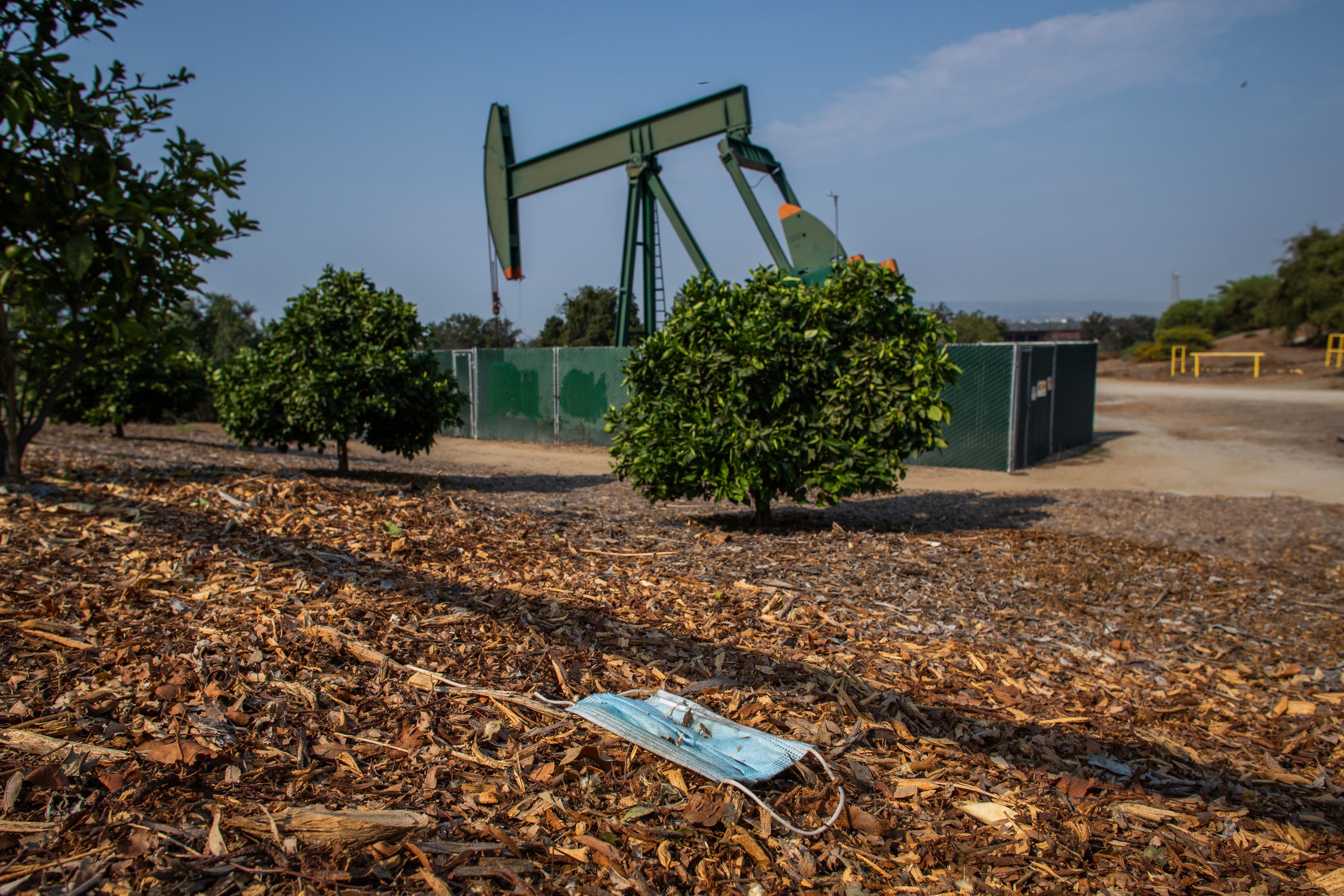A discarded face mask is pictured near an oil pump in Long Beach, California on August 22, 2020.
APU GOMES | AFP via Getty Images
LONDON — OPEC on Thursday said it had downwardly revised its forecast for global oil demand growth over the long term, given the industry faced “an existential threat” this year in the wake of the coronavirus pandemic and as climate policies continue to shape the future of energy.
In its closely-watched annual World Oil Outlook, the Middle East-dominated group of oil producers outlined its medium to long-term expectations for the global economy, oil and energy demand, and related policy matters. It also extended its forecast period through to 2045, from 2040.
OPEC said worldwide oil demand was expected to increase by nearly 10 million barrels per day (b/d) over the long term, rising to 109.3 million b/d in 2040, and to 109.1 million b/d in 2045. Global oil demand stood at 99.7 million b/d in 2019.
It represents a downward revision of over 1 million b/d when compared to the 2040 levels projected in the group’s 2019 outlook, published last November.
“The year 2020 will be remembered primarily for the omnipresence, as well as unprecedented scale and reach, of the Covid-19 pandemic. From an energy point of view, the lockdown-induced economic recession has resulted in the sharpest downturn in energy and oil demand in living memory,” OPEC said in the report.
Looking ahead, OPEC said the “big question hanging over energy and oil markets” was to what extent there would be a longer-term impact on consumer behavior, and thus energy demand.
What are some of OPEC’s key assumptions?
OPEC said it believed oil would remain the largest contributor to the energy mix through to 2045, accounting for more than 27%, followed by gas (roughly 25%), and coal (nearly 20%). These respective energy sources were also the three largest contributors to the fuel share in 2019.
The contribution from solar, wind and geothermal energy was expected to grow by 6.6% per year on average through to 2045, “significantly” faster than any other energy source. These renewable energy sources were expected to represent 8.7% of the fuel share in 2045, up from 2.1% in 2019.
An Austrian army member stands next to the logo of the Organization of the Petroleoum Exporting Countries (OPEC) in front of OPEC’s headquarters in Vienna, Austria April 9, 2020.
Leonhard Foeger | Reuters
The world economy was forecast to more than double in size, with global GDP expected to exceed $258 trillion in 2045, up from around $121 trillion in 2019.
The global population was projected to increase by over 1.7 billion people to almost 9.5 billion in 2045, OPEC said, up from 7.7. billion in 2019.
Climate policy
International benchmark Brent crude futures traded at $42.76 a barrel on Thursday afternoon, up almost 1.8% for the session, while U.S. West Texas Intermediate futures stood at $40.61 a barrel, around 1.6% higher.
Oil prices have fallen more than 34% year-to-date.
The impact of the pandemic, and resulting containment measures worldwide, created an unprecedented demand shock in energy markets this year. International Energy Agency Executive Director Fatih Birol has previously said 2020 may come to represent the worst year in the history of oil markets.
In the absence of a vaccine against Covid-19 or the development of effective treatments, OPEC said “it is possible the world will remain in a state of partial emergency for a sustained period.”
“Moreover, given that some of the massive stimulus programmes announced to combat the impact of the COVID-19 pandemic are explicitly designed to target support for ‘green’ projects, renewables and the like, an acceleration of the energy transition is possible,” it added, citing proposals announced by the EU as an example.
OPEC, which is comprised of some of the world’s most powerful oil producers, said it anticipated policy instruments that primarily target objectives of the 2015 Paris Agreement on climate change would “continue to drive a transition to renewable energy sources and a reduction in greenhouse gas (GHG) emissions.”
However, the group added that “while many countries are notionally signed up to a global, collective effort to combat climate change, the majority of policies relating to energy demand and supply will continue to be set and enforced at the national level, resulting in continued disparity in the scope of policy ambitions among countries and regions.”
